#Cathy Marston
Text
Timekeepers: Tankard/November/Nijinska/Ballett Zürich - Oper Zürich 02.02.2024
Timekeepers: Tankard/November/Nijinska/Ballett Zürich - Oper Zürich 02.02.2024 #BallettZürich #Tanz #Timekeepers #LesNoces #Rhapsodies #ForHedy #cathymarston #rezension #ballett #tanz
Die von Christian Spuck für das Zürcher Publikum geschaffene Wohlfühl-Zone ist nun definitiv vorbei. CATHY MARSTONs Konzept des neuen Triple-Bill-Abends “Timekeepers” des BALLETT ZÜRICH fordert seine Zuschauer:innen, bietet Neues und Altes, ist äusserst kontrastreich und schlichtweg wunderbar…
Continue reading Timekeepers: Tankard/November/Nijinska/Ballett Zürich – Oper Zürich 02.02.2024

View On WordPress
#Ballett#Ballett Zürich#Brandon Lawrence#Bregje van Balen#Bronislawa Nijinska#Cathy Marston#Dance#Florian Helgath#For Hedy#George Antheil#George Gershwin#Guy Livingston#Igor Strawinsky#Kritik#Les Noces#Magda Willi#Max Richter#Meryl Tankard#Mlindi Kulashe#Mthuthuzeli November#Opernhaus Zürich#Rezension#Rhapsodies#Rhapsody in Blue#Sean Bates#Sebastian Schwab#Shelby Williams#Tanz#Timekeepers#Triple Bill
0 notes
Photo

Edward Watson - The Royal Ballet - photo by Rick Guest
Former Royal Ballet Principal Edward Watson is a Répétiteur of The Royal Ballet. He trained at The Royal Ballet School and graduated into The Royal Ballet in 1994 and was promoted to Principal in 2005. He was appointed Répétiteur in 2020.
Watson was born in Bromley, South London. His repertory with the Company included major roles in works by Frederick Ashton and Kenneth MacMillan, and numerous role creations for choreographers including Wayne McGregor, Christopher Wheeldon and Alexei Ratmansky. His many role creations for McGregor included in Symbiont(s), Qualia, Chroma, Infra, Limen, Carbon Life, Raven Girl, Tetractys, Woolf Works, Obsidian Tear and Multiverse, and for Wheeldon Lewis Carroll/The White Rabbit (Alice’s Adventures in Wonderland), Leontes (The Winter’s Tale) and John Singer Sargent (Strapless). Watson has worked with numerous other choreographers, including Siobhan Davies, David Dawson, Javier De Frutos, Alastair Marriott, Cathy Marston, Ashley Page and Arthur Pita.
His numerous awards include the 2012 Olivier Award for Outstanding Achievement in Dance, the 2015 Benois de la danse and Critics’ Circle Awards in 2001, 2008 and 2022. He was awarded an MBE [Member of the Most Excellent Order of the British Empire] in 2015.
https://www.roh.org.uk/people/edward-watson
#edward watson#the royal ballet#rick guest#british ballet dancers#dance#danseur#ballerino#bailarín#ballet men#ed watson
20 notes
·
View notes
Text
Heavenly- Heavenly Vs Satan (Skep Wax)
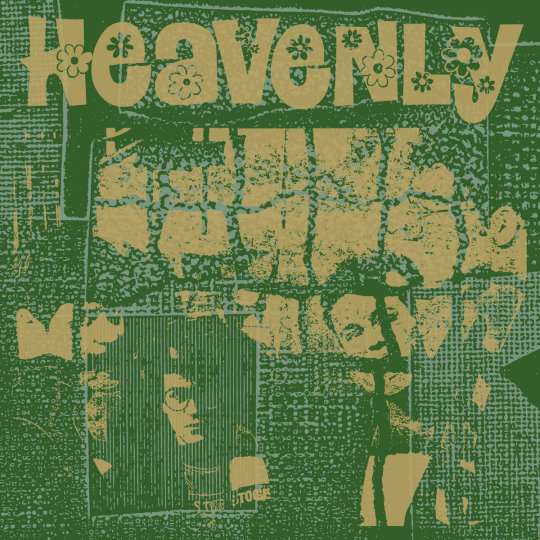
Heavenly were originally a 4-piece band from Oxford England, that created unique pop music for the time. Amelia Fletcher was on vocals, while on guitar was Peter Momtchiloff and the rhythm section was Rob Pursey on bass and Matthew Fletcher on drums (the band then added Cathy Rogers on vocals/keyboards on their next album). To longtime fans, this band was really something special.
Amelia and Rob started up a label a few years ago, Skep Wax Records, and have been releasing all kinds of excellent records. Then it was announced earlier in the year that the Heavenly albums would be reissued on vinyl so this was, of course, great news.
The band released this debut back in 1991 on the Sarah Records label. The Sarah label, known for releasing that wimpy, twee music, was both loved by a small army of fans and not-so-loved in the UK music press (remember, this was during the grunge era). Honestly, what did the UK press know anyway? Heavenly were a terrific band and it's high time these records are getting reissued.
Oh sure, Heavenly had a light sound at times, sometimes due to Amelia Fletcher's fluttery voice (which I happen to love) but could also rock/pop with the best of 'em and the songwriting was absolutely fantastic!
A few of my favorites on here include the great, strummy opener "Cool Guitar Boy," "Lemonhead Boy," "Wish Me Gone" (which I believe they rewrote a few years with a song called "Escort Crash on Marston Street"). It also adds the first two Sarah singles by the band, "I Fell in Love Last Night" and "Over and Over" both ace tunes and among the band's best.
The world eventually caught up with Heavenly, as in the past decade or two plenty of bands have copped their sound, but they were among the first. Hear it here in all of its airy, marvelous glory.
www.skepwax.bandcamp.com
www.heavenlyindie.bandcamp.com
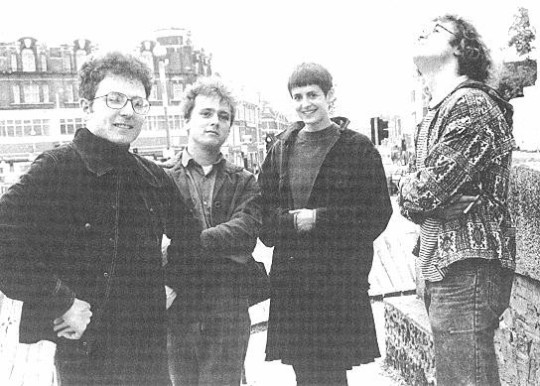
10 notes
·
View notes
Text
ooc: no Cathy you cannot use Slater as live action John Marston.
2 notes
·
View notes
Text
THE JANE EYRE BALLET IS COMING BACK IN 2025!!!!!!!!!!! ✨️✨️✨️🎊🎊🎊
I've had a Google alert set for years with no real hope that Northern Ballet would perform Cathy Marston's Jane Eyre again, and here we are!!!!!! I could actually cry!!!!! I'm going to start saving up so I can see it at least twice!!!!!!
0 notes
Photo



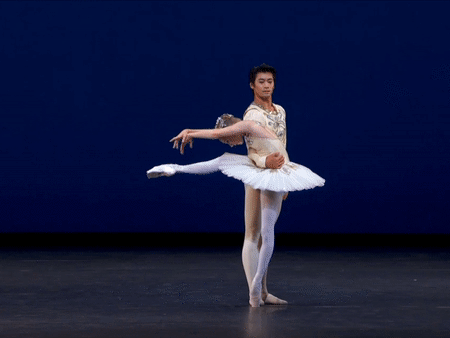
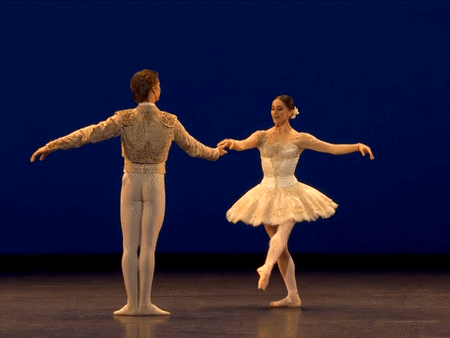

The Royal Ballet: Back On Stage
#anna rose o'sullivan#Marcelino Sambé#marcelino sambe#marcelino sambe and Anna rose O’Sullivan#la fille mal gardee#Frederick Ashton#Reece Clarke#Fumi Kaneko#fumi kaneko and reece clarke#in our wishes#cathy marston#Akane Takada#federico bonelli#akane takada and federico bonelli#swan lake#sarah lamb#Ryoichi Hirano#sarah lamb and ryoichi hirano#diamonds ballet#diamonds#jewels#jewels ballet#George Balanchine#Marianela Nunez#vadim muntagirov#marianela nunez and vadim muntagirov#laura morera#alexander campbell#laura morera and alexander campbell#the dream
115 notes
·
View notes
Photo

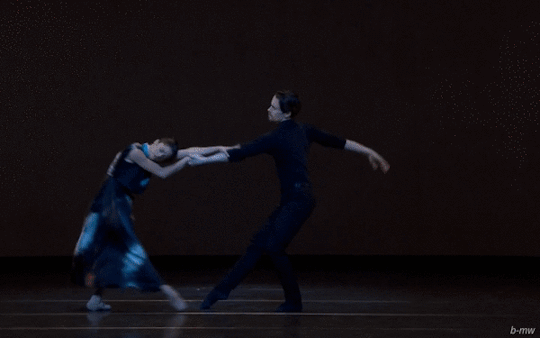
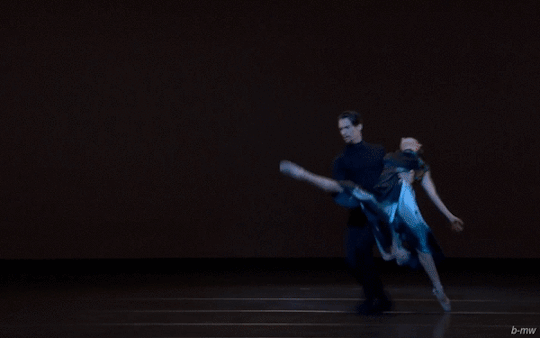
Romany Pajdak and Calvin Richardson in In Our Wishes
#romany pajdak#Calvin Richardson#in our wishes#the royal ballet#within the golden hour#ballet#my gif#royal opera house#sergei rachmaninoff#cathy marston#royal ballet#ballet gif#en pointe#the royal ballet: live – within the golden hour
13 notes
·
View notes
Text
The Cellist, a new ballet by Cathy Marston (contains spoilers)
The Cellist, a new ballet by Cathy Marston (contains spoilers)
Cathy Marston has created her first work for the Royal Ballet The Cellist, based on the life of British cellist Jacqueline du Pre, whose career was tragically cut short at the age of 28 due to the effects of multiple sclerosis. In this one-act ballet, Marston provides a series of vignettes, the critical moments in du Pre’s life. Her discovery of the cello as a young child, danced with sparkling…
View On WordPress
#Ballet#Cathy Marston#Contemporary choreography#contemporary dance#Jacqueline du Pre#new work#premiere#royal ballet#Royal Opera House
1 note
·
View note
Photo
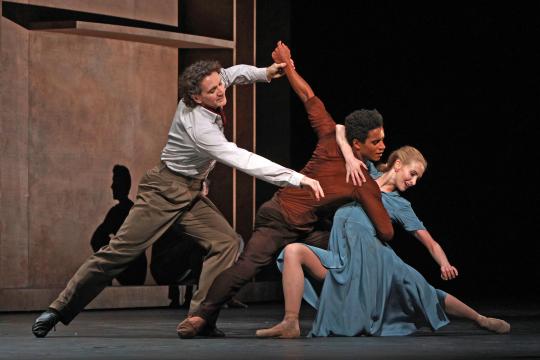
Gary Avis, Marcelino Sambé, and Lauren Cuthbertson in The Cellist, photo by Marilyn Kingwill for the Times of London.
Ballets about Jews are few and far between, and although Cathy Marston’s one-act ballet The Cellist, created for the Royal Ballet, is mostly quiet about this facet, it certainly is about a Jew.
Jacqueline Du Pré z”l (1945 – 1987) is generally accepted to have been one of the greatest cellists of all time, particularly known for her interpretations of Edward Elgar. She made many recordings still considered to be gold standards, appeared in the notable film The Trout alongside Daniel Barenboim, Itzhak Perlman, Pinchas Zukerman and Zubin Mehta, toured internationally, and taught extensively after her multiple sclerosis cut short her performing career.
Du Pré, whose family hailed from the Channel Islands, met and fell in love with Israeli-Jewish pianist and conductor Daniel Barenboim in the mid-1960s, and they developed a noted professional relationship as musician and conductor alongside their personal association. In 1967, during a visit to Israel, Du Pré converted to Judaism and married Barenboim at the Western Wall. Although her marriage to Barenboim eventually dissolved, her relationship to Judaism persisted throughout her life -- indeed, she was buried in the Jewish cemetery of Golders Green. In conversation with William Wordsworth, editor of the book Jacqueline du Pré: Impressions, she noted that, “I think the thing that made it so easy for me is that the Jewish religion is perhaps the most abstract. Since I was a child I had always wanted to be Jewish, not in any definite way, because, of course, I didn’t understand anything about it. Possibly it may somehow have been to do with the fact that so many musicians are Jewish. …” In a BBC interview in 1981, she described her feelings about Judaism’s relationship to music: “I am sometimes asked if religion has helped me and I always reply: To be quite honest, not as much as music, because for me the Judaism is almost bound up in the music. I just cannot separate them or indicate their boundaries.”
The Cellist is a condensed and stylized retelling of her life from the first time she picked up the instrument to her eventual retirement from the stage as a result of her MS. Overall, it presents a balanced picture of her life without sensationalism. Balletic treatments of women artists are few and far between, as are treatments of disability, as are ballets by women and ballets about Jews. I think it could be said that Marston treats Du Pré’s disability in the abled model of three-act tragedy, trying to fit it into a narrative form that life and illness simply don’t have. I was also at times uncomfortable with the objectification (literally) of Black dancer Marcelino Sambé as Du Pré’s cello and the spirit of music, although Sambé danced with incredible beauty and fluidity, and other dancers also played the role. Nonetheless, I think it to be worth seeking out to form your own opinions.
Du Pré’s Jewishness is lightly touched upon in a brief scene depicting her wedding with Barenboim: the couple are hoisted up upon chairs, as is traditional in Ashkenazi weddings, and the score quotes, of all things, the hora. It was a moment of sweet recognition in a world that ignores Jews, especially Jewish women, or relegates them to magical, greedy villains such as Coppelius.
Further reading: JWA entry on Du Pré’s life and work, archival news piece on Du Pré and Barenboim’s marriage, a personal reflection by blogger kaznyoung on the impact of Du Pré’s recordings of the Kol Nidre prayer, The Guardian review of Marston’s The Cellist, BBC review of The Cellist, Financial Times review providing a rather different take
5 notes
·
View notes
Photo
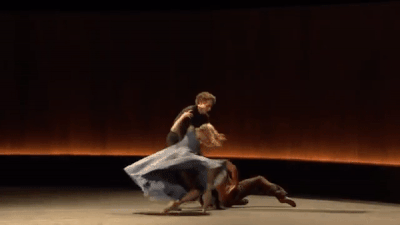

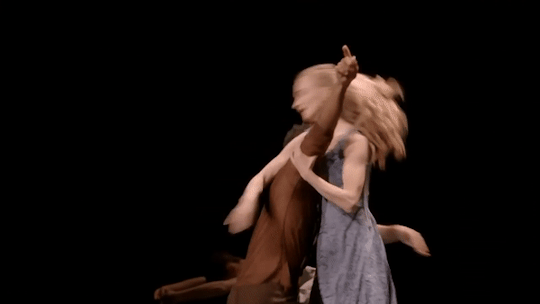
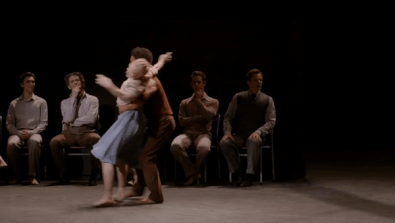




The Cellist @ The Royal Opera House Ballet
#ballet#dance#the cellist#Laura Cuthbertson#marcelino sambe#matthew ball#royal opera house#cathy marston
27 notes
·
View notes
Photo

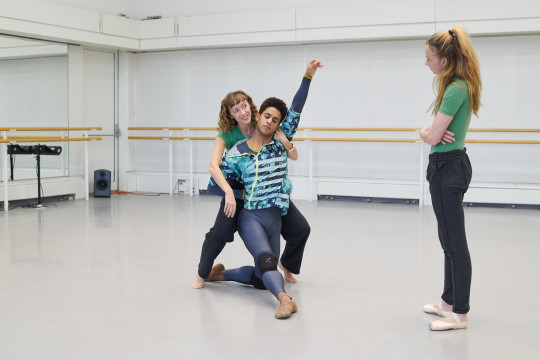
Lauren Cuthbertson and Marcelino Sambé rehearsing The Cellist with Cathy Marston (Royal Ballet, 2019)
10 notes
·
View notes
Text
Walkways: W. McGregor/C. Marston/J. Robbins - Ballett Zürich 01.01.2024
Walkways: W. McGregor/C. Marston/J. Robbins - Ballett Zürich 01.01.2024 #tanz #infra #snowblind #glasspieces #ballettzürich #neujahr #triplebill
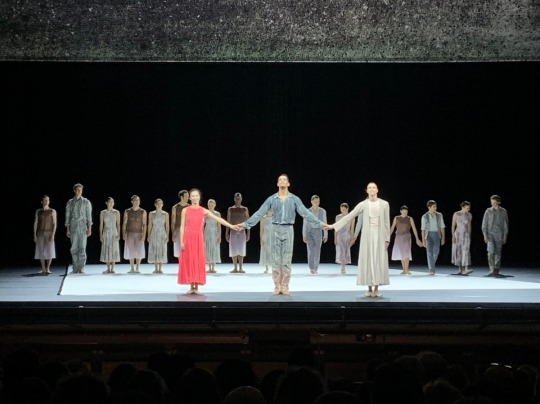
View On WordPress
#Ballett#Ballett Zürich#Brandon Lawrence#Cathy Marston#Daniel Capps#Edith Wharton#Elena Vostrotina#Glass Pieces#Infra#Jerome Robbins#Kritik#Max Richter#Opernhaus Zürich#Philharmonia Zürich#Philipp Glass#Rezension#Ruka Nakagawa#Snowblind#Triple Bill#Wayne McGregor#Zürich
0 notes
Photo
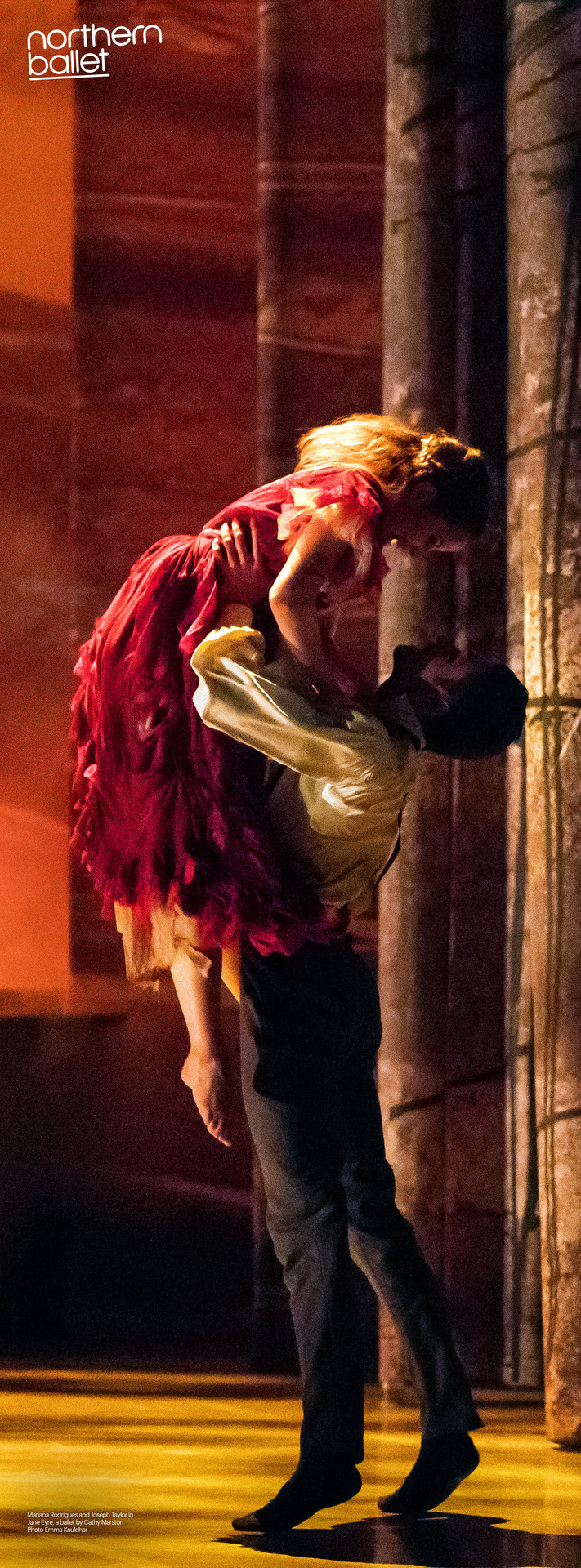
Northern Ballet dancers Mariana Rodrigues and Joseph Taylor in Jane Eyre, a ballet by Cathy Marston.
Photo Emma Kauldhar.
#Jane Eyre#Northern Ballet#Mariana Rodrigues#Joseph Taylor#ballet#dance#dance photography#ballet photo#Cathy Marston#Emma Kauldhar
28 notes
·
View notes
Text
You Can’t Go Backwards: Jane Eyre at the Joffrey Ballet

I’ll say this right at the outset: as much as I love dance, and can admire the skill and beauty of ballet, the big, 19th-century story ballets don’t do a thing for me. Swan Lake, Coppelia, Sleeping Beauty, none of them. Oh, you can update them with snazzy sets and costumes, but for the most part I find them tedious. They’re best in excerpts, as far as I’m concerned, to enjoy the virtuoso dancing in them, without having to try to follow a plot delineated by movement and mime. And note that I don’t include here the more abstract ballets of people like Ballanchine, or even the Tanztheater works of people like Pina Bausch. I’m talking the 19th-century chestnuts.
So, when the Joffrey Ballet announced a “new” ballet, based on Jane Eyre, with an original score, I thought, well, maybe. After all, it’s the 21st century, and maybe they’l come up with something Post-Modern and abstracted, vaguely based on the story of Jane Eyre. Alas, that was not the case. What choreographer Cathy Marston and composer Philip Feeney have come up with here is not something Post-Modern that comments on the ballets of the past. They have attempted to create, in essence, a new 19th-century story ballet, a piece of ersatz Romanticism that takes a 19th-century novel and tries to render its plotline in movement. It didn’t work for me.
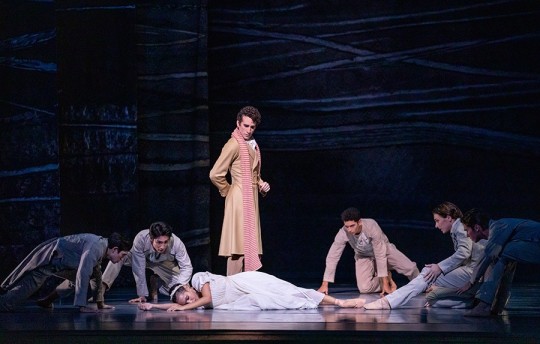
Feeney’s score was part of the issue. I was OK with it when it evidenced a certain bland Post-Minimalist quality (kind of like a Philip Glass film score, which is always indistinguishable from every other Philip Glass film score, or in this case, like the bland minimalist Romanticism of Michael Nyman). I kept thinking, the music is trying to be like early 19th-century music. It wants to be, I don’t know, Schubert or something like that. Then, as the first Act slumped toward its conclusion, sure enough, it actually turned into Schubert, with a set of variations on the song “Auf dem Wasser zu singen.” As if that wasn’t enough, the end of the first act relied on an orchestration of the slow movement of Schubert’s Sonata for piano in B-flat, D. 960. (I notice that Feeney’s score says “compiled and composed.” So...he’s more like the editor?)
I might not have minded the bland pseudo-Schubert score, but the mise-en-scene of this story ballet kept going around the bend for me. Like, who were the dudes who kept chasing poor Jane around the stage? Figures of death? Unfortunate ex-boyfriends who still haunted her? Why did the same gang show up later with a saddle and start riding each other? (And regarding that scene, I have a general what-the-fuck reaction as to what was supposed to be going on...do I need to re-read Jane Eyre?) I had a similar wtf moment when Jane “saves” Edward Rochester from his burning bed. And who was that lady in red lurking around? Another angry ex who existed only in the imagination? Indeed, distinguishing “real” from “imaginary” in this work was a constant struggle.
And therein lies the heart of my problem with story ballets. The “language of dance” is very inherently abstract. Yes, it can convey emotion, but typically it is at its most emotional when it is not engaging in bad mime. I’d be willing to bet that when Charlotte Brontë wrote the novel, she wasn’t thinking “This will make one hell of a ballet!” Rather, she thought her story best conveyed in carefully chosen WORDS, that allowed her to explore her characters’ states of mind and their actions. Joffrey’s Jane Eyre had a lot of posturing and posing, and kept trying to be like the ballets of the past. The problem is, it’s the present.
0 notes
Text
SF Ballet Programs 2 and 3
The ephemeral nature of dance and my own gradual but inevitable senescence conspire to make my impressions more and more fleeting, and in the tradition of our earliest writers, I aim to commit my experiences to some kind of posterity.
Hell of a modest way to start blogging again.
I bought a ticket to Program 2 because it originally featured a ballet called Anima, Animus, which sounded admirably contemporary but was then pulled a few weeks before the premiere of the program. (I haven’t investigated why, but with the recent news of NYCB and its own #MeToo turmoil, you kind of have to fear. I hope I’m wrong.) Because the other two parts of the program were distinctly neo-classical (Balanchine, Millepied), I seriously (not really) considered asking for a refund or exchange, but laziness prevailed and I went to the program. And I’m glad that I did! The Balanchine program was Divertimento No. 15, and while I didn’t love it, I wasn’t as bored by it as I expected to. I learned to watch not just individual dancers but the entire formation to appreciate the geometries of Balanchine’s blocking, which is quite a lot different from what I get out of contemporary ballet (athletic execution and tricky partnering). Millepied’s Appassionata came next, which was a double feat because the moment that has stuck with me -- a trio of ballerinas emerging backwards from the wings en pointe, gliding like apparations -- was so striking that the likeliest reference to Giselle made me reconsider my disinterest in classical story ballets.
Finally, the replacement to Anima, Animus was Justin Peck’s Hurry Up, We’re Dreaming, which I didn’t realize was set to a bunch of M83 songs. The above New Yorker actually mentions Peck’s work as a choreographer, not, thankfully, directly in connection to #MeToo, but hardly glowingly: “His casts, even when they are not wearing sneakers, and jackets emblazoned with protest slogans, [...] often seem like teen-agers, a notion that is highly vulnerable to cliché and sentimentality.” Hurry Up, We’re Dreaming does nothing to disprove Acocella’s assessment but I didn’t care -- the earnest hope of the (yes) young dancers together with M83′s exultant emotional triumphalism brought me to the edge of tears, so potent was its celebration of the joy of dancing. I wish that, instead of the more sedate direction it takes, it would’ve crested into a frenzy of giddiness and dionysian ecstasy, but I’m not the choregraphic wunderkind here.
Onto Program 3, fresher in my mind but not more memorable.
I was late by minutes to The Fifth Season, which is a stately neoclassical affair that is nearer to my tastes, but I was maybe too far away to appreciate it properly (shame too because it featured Dores Andre, Sofiane Sylve, and Yuan Yuan Tan -- one hell of a cast).
I got to my seat (row H! But seat 20, which is only one chair in from the right-most edge) for Snowblind, which quickly dashed my incipient curiosity into watching more story ballets. I was mildly interested to see that Jennifer Stahl (who came to my attention for her portrayal of the Chosen One in The Rite of Spring) was playing yet another matronly character (she played Victor’s mother in Frankenstein, if memory serves).
Harald Lander’s Etudes closed the evening, and despite a slow beginning (problematic for initially reducing its women to mere legs), two things drew me into its drama. First, Sasha de Sola’s balance is unreal. I admit that I’ve slept on her for superficial reasons (she doesn’t have the natural extension of, say, Sarah Van Patten), but seeing her pointe work on a single foot all while being as solid as a statue was marvelous. Second, Angelo Greco! (Whom I’ve singled out for praise before, but that was nearly two years ago, so I’m excusing myself.) Simply a turning machine! And the finale where everyone is on stage is a rush, even if I was dying for it to go on longer.
#sf ballet#sfballet#ballet#benjamin millepied#george balanchine#balanchine#harald lander#justin peck#helgi tommason#cathy marston#appassionata#divertimento no. 15#hurry up we're dreaming#m83#sasha de sola#angelo greco#etudes#snowblind#the fifth season
0 notes
Note
Hi! I've just stumbled upon your blog and am delighted. Just wanted to ask if you've seen The Cellist and if so, what are your thoughts on it. (I was personally amazed, both from the ballet and music point of view, just wish I could've watched it for a second time and write about it here on tumblr in time for others to watch as well.)
I’m sorry not to agree but I really just don’t like it. I am a classical musician myself and I really felt that Cuthbertson really just couldn’t touch the expressiveness of du Pré. I like the idea of the cello being a moving person, but I just felt that Marston did not connect with the music in any sort of meaningful way. To me, the steps were totally unconnected from the music and that is also to me the biggest problem with her as a choreographer overall.
4 notes
·
View notes